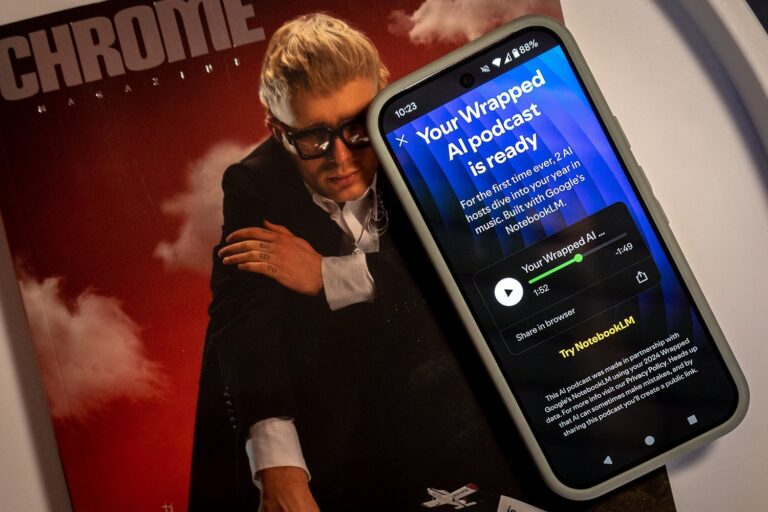Great sound comes at a high price
There are many factors to consider when shopping for wireless headphones. Some people want the best active noise cancellation (ANC), while others are more interested in features that allow for all-day wear. Some people want a seamless interaction with their phone, while others are looking for the best sound quality. If you fall into the latter category, Bowers & Wilkins Pi8 ($399) worth considering.
The company has consistently produced some of the best audio performance you’ll find in in-ear headphones. But its wireless headphones weren’t quite up to par. They provided great clarity and ample attention to fine details in songs. Still, there was work to be done to build a fuller, more immersive soundstage. With the Pi8the company has redesigned its sound platform, adding new, larger drivers for even more nuance and improved low-end tone. Unfortunately, however, there are still some areas where Bowers & Wilkins needs to improve to truly compete with the best.
The Pi8 is an audio upgrade over last year’s Pi7, but average ANC performance and only basic features detract from the overall experience.
- Excellent sound clarity
- Improved bass
- Reliable multipoint connectivity
- expensive
- Implementation of ANC
- No advanced features
What’s so good about the Pi8?
Bowers & Wilkins has introduced a completely new design to the Pi8, offering a completely different shape than this one Pi7 S2. This model has a more uniform, oval shell, which I think gives it a refined look compared to its predecessor. The company has also chosen to use interesting details, such as a microphone grille that spans the width of the headset to hide components that have in the past been prominently displayed. Yes, this outer area still accepts taps and long presses for calls and audio playback, and these actions provide quick responses.
The biggest update to the Pi8 is sound quality. Larger 12mm carbon cone drivers power the sound, which is a change from the 9.2mm dynamic drivers in the Pi7 S2. Bowers & Wilkins also opted for 32-bit digital signal processing (DSP) over the previous model’s 24-bit. These headphones also support aptX Lossless, while the earlier version uses aptX Adaptive. The company says all these changes, especially the new drivers, reduce distortion and offer better high-frequency detail.
I found these statements to be true. The Pi8 has improved detail compared to the Pi7 S2, which is an achievement because these headphones already offer excellent clarity. Instruments like guitars stand out on albums like mewithoutYou’s emo/post-hardcore Catch the foxes for us. In this recording, the two guitars have dialogue or interaction during most of the songs, and you can clearly hear both playing their parts. The guitars also seem to float over the booming drum and strumming bass lines. Aaron Weiss’s vocals, mostly spoken, also permeate the mix with all the emotion and metaphors he loads them with.
Bass performance has also improved on the Pi8. It’s never overwhelming, but you get solid rock and metal drum sounds that drive the songs rather than drowning out everything else. A thrashing metal album by No Cure I hope to die here is a prime example of this. The drums are there to lead the thick guitar riffs through the heavy punches and softer verses, but everything remains nuanced and distinct. Even though the vocals are all screamed, you can easily pick out each word instead of them fading into the mix.
Bowers & Wilkins extended the Pi8’s battery life to 6.5 hours with ANC on. That’s 90 minutes more than the Pi7 S2. That figure is also inches closer to the likes of Sony’s WF-1000XM5 which lasts eight hours of listening with noise cancellation. Bowers & Wilkins has again included wireless transmission in the charging case, allowing you to use the Pi8 at times when a Bluetooth streaming source isn’t an option – like in-flight entertainment. This tool is not new to the company’s products, as others, such as JBL, have also included it. However, wireless transmission is not yet so widespread that I would say it is readily available elsewhere.
What’s not so good about the Pi8?
The biggest downside to the Pi8 is the price: $399. Sony’s WF-1000XM5 cost $300 at launch, though they usually go for around $200, and were at the top of our the best headphones list since then. Bowers & Wilkins gear has always had an edge over Sony and others, and that’s exactly what’s happening here. While the Pi8 has more nuanced and detailed sound than the M5s, Sony and others offer advanced features that make your life easier.
For example, Sony’s flagship can automatically pause audio when it detects you’re talking. It can also automatically adjust sound settings based on your location to streamline your day. These types of tools can go a long way to extending the Pi8’s range. All the bases are well covered in Bowers & Wilkins’ latest set, but there’s nothing extra here in terms of features, making its price a significant drawback.
This extends to the limited customization of the Pi8. There’s a 5-band EQ in the company’s app to fine-tune the sound profile, and you can change what a long press does. However, you can only choose between ANC/ambient sound (left) and voice assistant (right) or volume controls (top right, bottom left). Having to give up the ability to switch between noise canceling and transparency mode to get built-in volume controls is a significant sacrifice. Both actions are used frequently and it would be nice not to have to reach for my phone to do both.
Active noise cancellation is another area where the Pi8 falls short of its competitors. I’d describe it more as noise reduction, as the technology here fights constant distractions like fans and white noise machines. Like most headphones, this model also has issues with human voices, but they’re not that alarming at around 50 percent volume. ANC performance was okay on the Pi7 S2 as well, so this is still an area the company can improve to further close the gap with the likes of Bose.
The final verdict on the Pi8
Bowers & Wilkins continues to impress me with the sound quality it produces. The company’s Px7 S2e headphones are my choice the best overall sound quality and I’ll probably give the same honor to Pi8 headphones. Simply put, few companies create sound profiles with the amount of detail, nuance and depth that Bowers & Wilkins consistently delivers. Audio performance is definitely the main reason to consider buying these headphones.
But there are other very important things that ANC headphones need to do. You should be able to count on them blocking out a lot of noise, and the Pi8 isn’t great at that. I think advanced features like speech recognition, adaptive noise control, and other automated tools are also important as we head into 2025. Add the ability to highly customize controls and settings to that list. These are missing on the Pi8 and I can appreciate that some people probably won’t care. But in my opinion, a $400 headset should be all-inclusive and almost flawless. The Pi8 shows that this company is well on its way, but also that it still has work to do.






